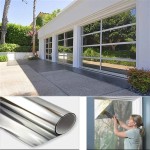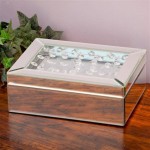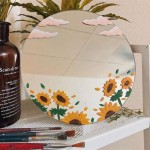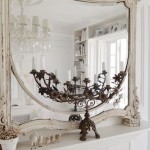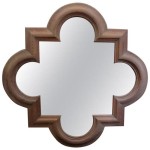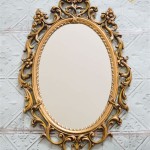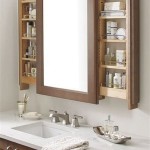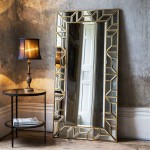Essential Aspects of Refinishing Antique Mirror Frames
Refinishing antique mirror frames is a meticulous process that requires a deep understanding of the materials, techniques, and finishes used in the original construction. By addressing these essential aspects, you can restore the beauty and integrity of your antique mirror frame while preserving its historical significance.
In this article, we will delve into the key components of refinishing antique mirror frames, providing you with valuable insights to guide your restoration project. We will cover the importance of material identification, surface preparation, repair techniques, refinishing options, and aging techniques, ensuring that your antique mirror frame regains its former glory.
Material Identification
The first step in refinishing an antique mirror frame is to accurately identify the materials used in its construction. Common materials include wood, metal, plaster, and composition. Each material requires specific cleaning, repair, and refinishing techniques, so proper identification is crucial for successful restoration.
Surface Preparation
Thorough surface preparation is essential to ensure a smooth and durable refinish. This involves cleaning the frame to remove dirt, grime, and old finishes. For delicate surfaces, such as plaster or composition, gentle cleaning methods are essential to avoid damage. After cleaning, the surface must be sanded to remove any imperfections or unevenness.
Repair Techniques
Antique mirror frames often exhibit signs of wear and tear over time. Minor repairs, such as filling in cracks or securing loose joints, can be carried out using appropriate materials and techniques. For more extensive damage, professional restoration may be required to preserve the integrity of the frame.
Refinishing Options
The choice of refinishing technique depends on the desired outcome. Stripping the frame to its original finish allows for a complete transformation, while painting or staining can enhance the existing character of the frame. Faux finishes, such as marbling or wood graining, can be used to replicate the original appearance or create a unique look.
Aging Techniques
To achieve an authentic antique look, aging techniques can be employed. These techniques, such as distressing or antiquing, add subtle signs of age and wear to the refinished frame. Properly executed aging techniques can enhance the historical character of the frame and make it a true centerpiece of your decor.
By embracing these essential aspects, you can approach the refinishing of your antique mirror frame with confidence. Whether you are a seasoned restorer or a novice enthusiast, understanding these key components will empower you to restore the beauty and integrity of your cherished antique.

12 Techniques To Painting Antique Mirrors Hallstrom Home

12 Techniques To Painting Antique Mirrors Hallstrom Home

Chalk Painting An Antique Mirror Frame Tutorial Rise And Renovate

12 Techniques To Painting Antique Mirrors Hallstrom Home

12 Techniques To Painting Antique Mirrors Hallstrom Home

How To Paint A Mirror Frame Antique White Well Purposed Woman

From Drab To Fab In 10 Minutes Vintage Mirror Frame Makeover Zle Design

How To Refinish An Antique Mirror With A Dark Stained Frame Celebrated Nest

How To Paint A Mirror Frame Gold Remodelando La Casa

12 Techniques To Painting Antique Mirrors Mirror Diy

